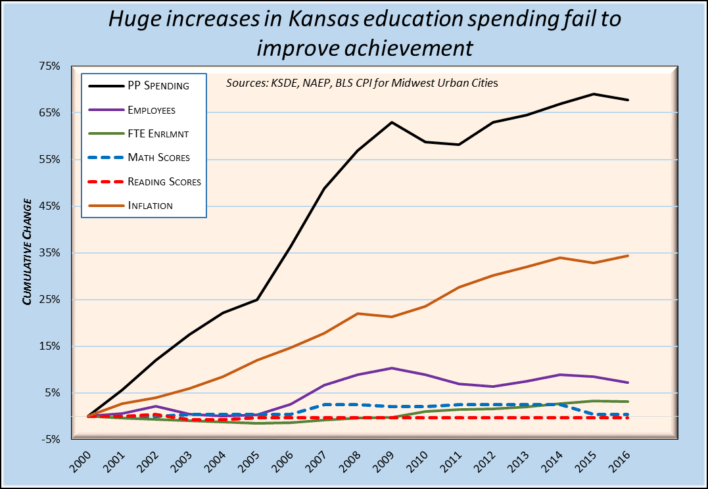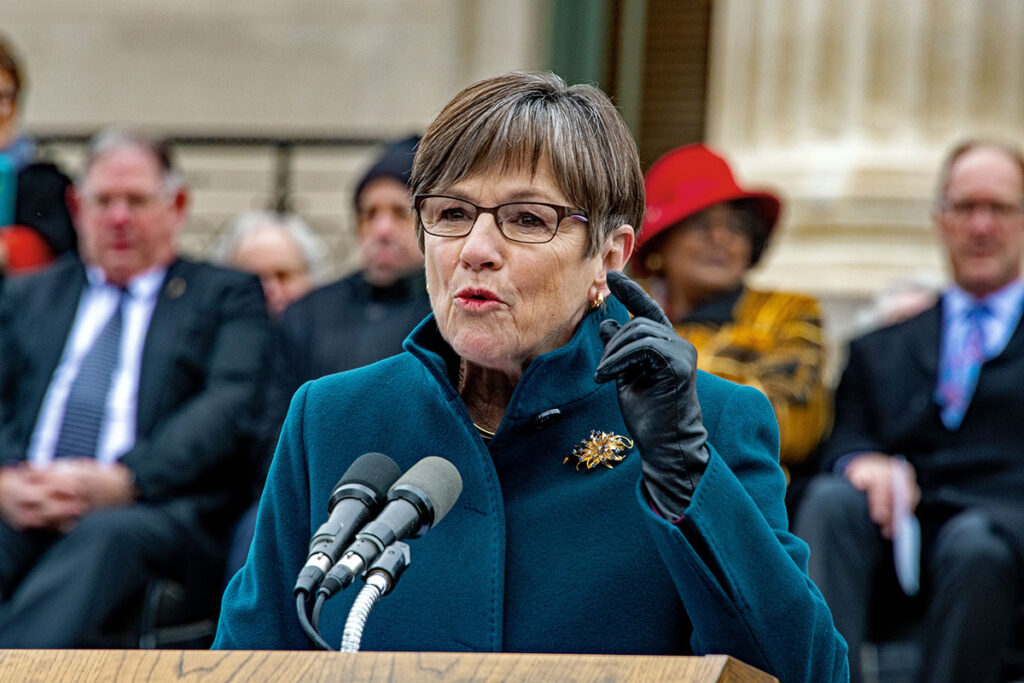The Gannon and Montoy school lawsuits have resulted in school districts diverting $7.3 million that could have been spent on Instruction to their lawyers suing between the 2005 and 2017 school years. The data is provided by one of the districts’ law firms – Somers, Robb and Robb. The downloadable listing below indicates over $300,000 more is already committed for the 2018 school year.
Eighty of the state’s 286 school districts have contributed  money to Schools For Fair Funding, and that coalition hires the lawyers. Dues are proportionally based on enrollment and the money comes from discretionary funding that can be used for Instruction or any other purpose.
money to Schools For Fair Funding, and that coalition hires the lawyers. Dues are proportionally based on enrollment and the money comes from discretionary funding that can be used for Instruction or any other purpose.
Wichita has spent the most, at $2.3 million, followed by Kansas City ($860,000), Dodge City ($421,000), Salina ($377,000) and Emporia ($310,000). The adjacent table lists the districts that have spent more than $200,000.
According to their web site, member districts want funding restored (apparently referencing the now-defunct school funding formula). They say “Opponents of public education want the privatization of schools, or a free market approach to education; as well as a shift of funding from the state to local property taxes. Their tactic is to cut public funding of schools that pits groups of students, rich and poor, western and urban, against each other in a competition for education.”
School districts’ shameful claims about ‘opponents’ are blatantly false. Saying those who don’t support their demand for upwards of $1 billion more on top of record-setting funding are opponents of public education is insulting. And no one is proposing to privatize education or to favor one group or region over another. These absurd claims are merely strong-arm tactics intended to scare citizens into submitting to their monetary demands.
The primary objection to their demands is that taking another $1 billion from citizens won’t address the real education crisis – anemic overall achievement levels that are especially harmful to low income students and families. The National Assessment of Educational Progress (NAEP) shows that only about a quarter of low income kids in Kansas are Proficient in Reading and Math, and barely half of their more affluent peers are Proficient. ACT results show only 35 percent of White students are college-ready in English, Reading, Math and Science and it’s even worse for Hispanic students (14 percent) and African American students (6 percent).

The time it would take to close achievement gaps used to be measured in decades; now, it must be measured in centuries.
State assessment results are also discouraging. Only 11 percent of low income 10th graders were on track to be college and career ready in Math last year, and just 34 percent of their more affluent peers were on track.
Scientific polling shows Kansans of all political ideologies wanted the new school funding formula to hold districts accountable for improving outcomes and closing achievement gaps (as in, there is a consequence for not doing so) and they wanted schools held accountable for spending taxpayer money efficiently. But the education lobby rejects real accountability so the Legislature dutifully provided a big bag of money and declined to put students first by holding school boards accountable.
If money was the answer, there would be no achievement gaps in Kansas or across the country. The research repeatedly shows that it’s not how much money is spent that makes a difference, but how money is spent. Unfortunately, many local school boards choose to operate inefficiently and divert money from Instruction while using school lawsuits to sue citizens for more of their hard-earned money.
SFFF dues 2005-2018




